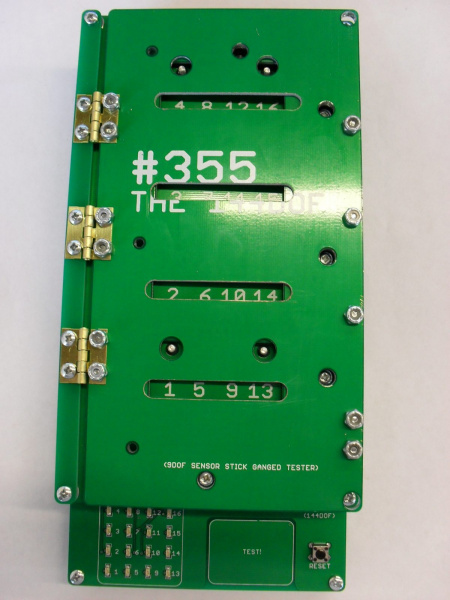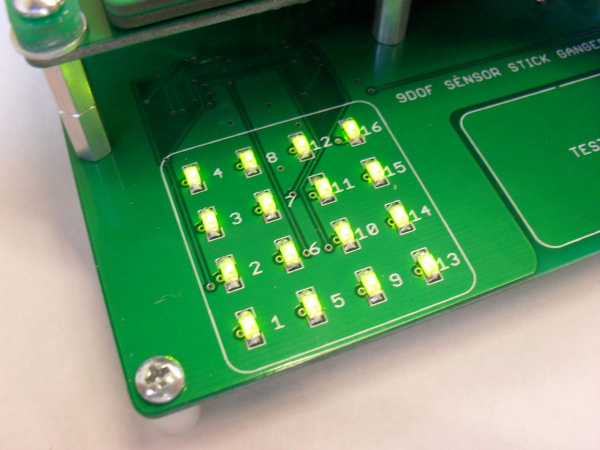Constant Innovation in Quality Control
Shift Registers to Control LEDs
Some of our larger testbeds need to indicated the status of 8-16 boards. The technician needs to see if all of the boards passed or failed. To expand the IO capabilities of our standard testbed micro (the trusty ATMega328), we have augmented our designs with shift registers.
Above, you can see that we have daisey-chained two shift registers together. This way we can use the same 5 pins off of our micro to control up to 16 LEDs.
We like this part (74HC595) for two reasons: (1) it's already in our inventory and (2) the SOIC package is relatively easy to hand solder onto a testbed, and very unlikely to jumper.
One might ask, "Why not use a larger micro?" Well, we like to keep things simple, and so that means keeping our desings small, similar, and repeatable. And so we want to keep using the ATMega328 whenever possible. 99% of our testbeds use this micro.
Below is a picture of our multi-board testbed for the 9 Degrees of Freedom - Sensor Stick. Kade Jensen was the test developer on this project, and he appropriately named this the "144 DOF".
Check out all those status LEDs:
All possible thanks to the innovating with a shift register - wahoo!


